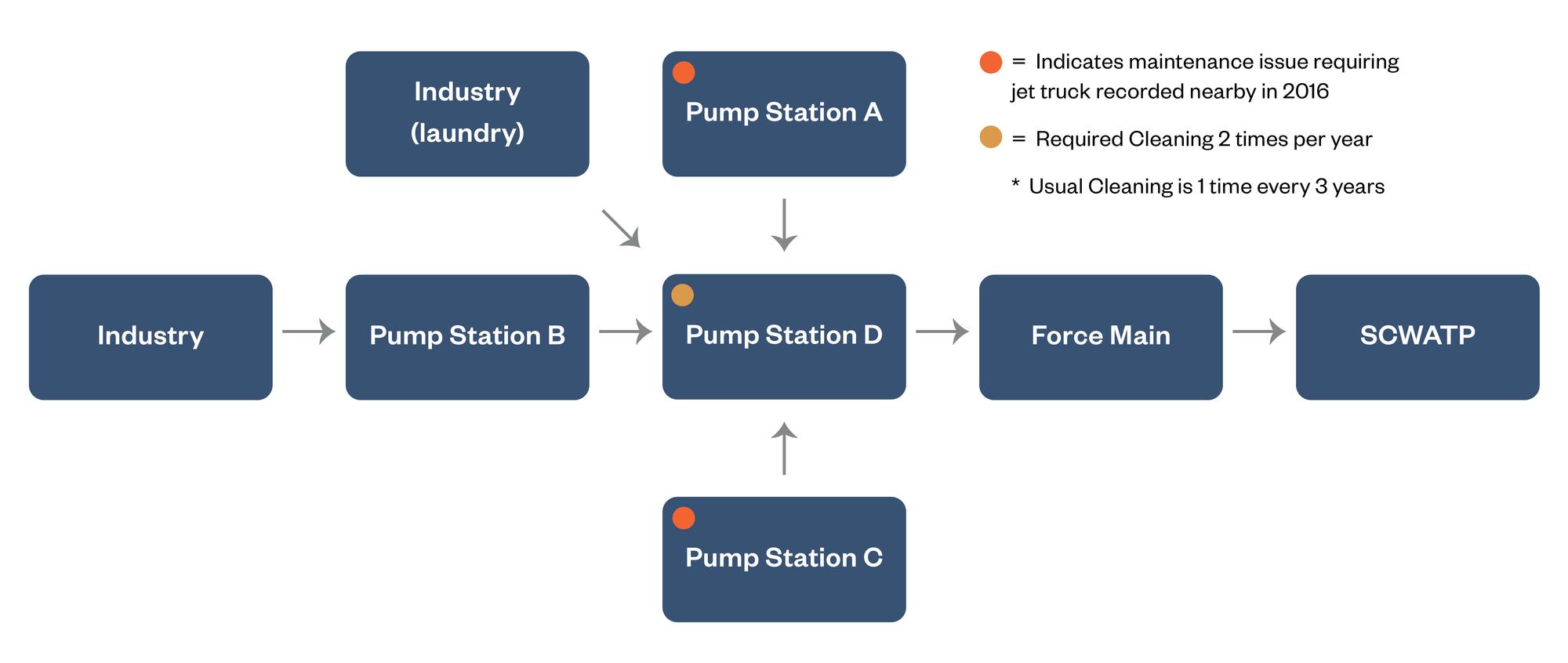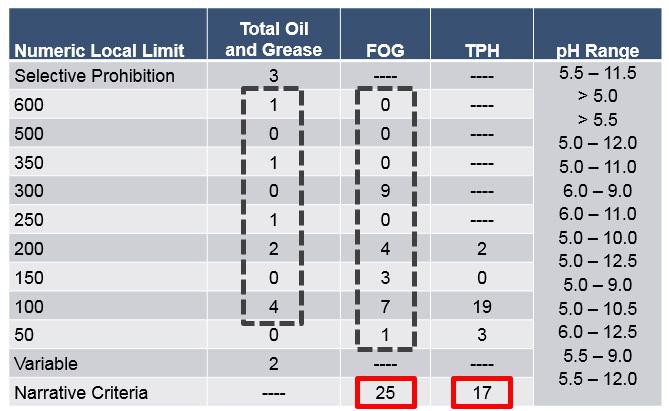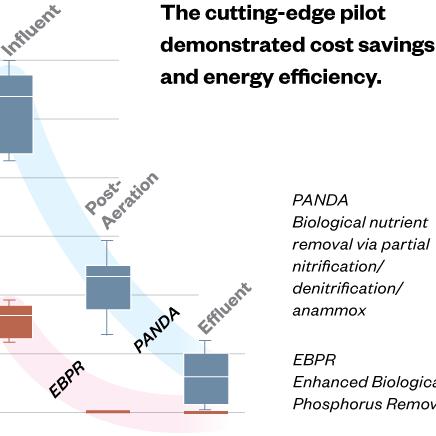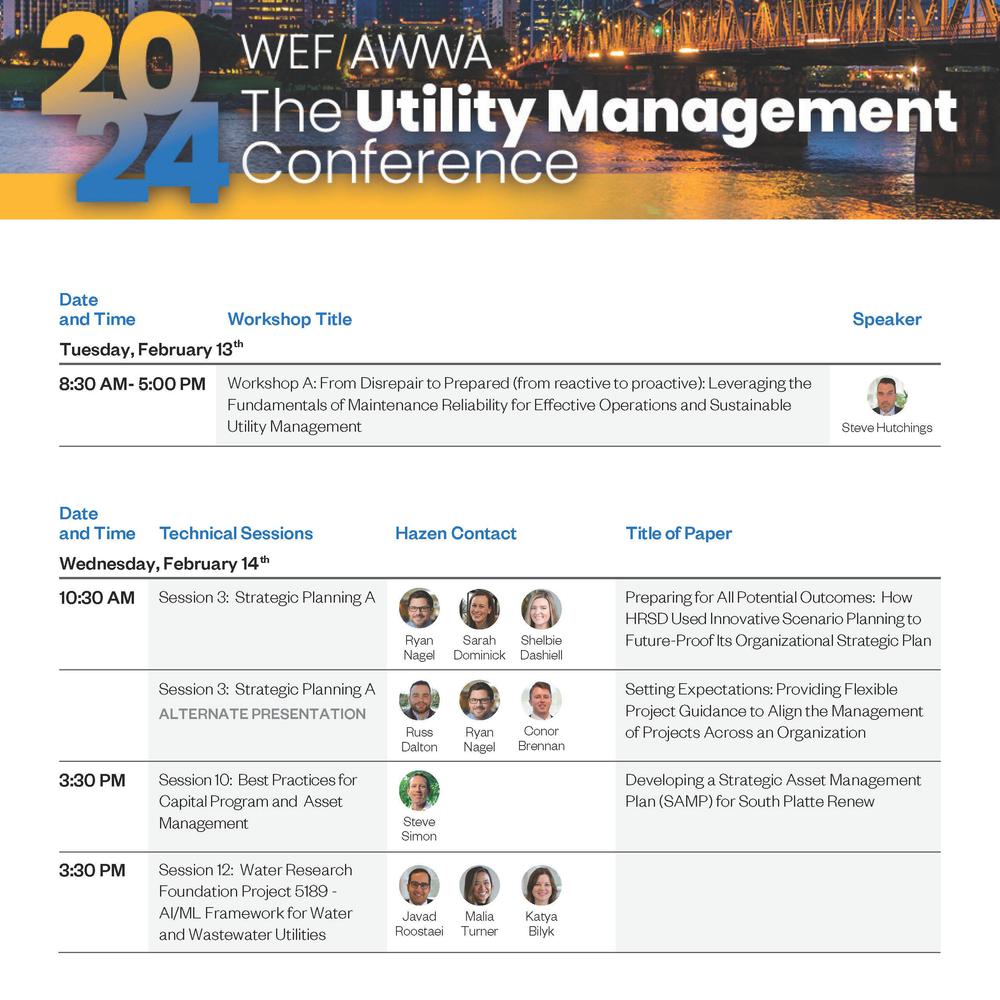Unintended Consequences of a Local Limits Revision
One Utility’s Experience with FOG
Last Modified Feb 07, 2022
The South Central Wastewater Authority (SCWWA) owns and operates the South Central Wastewater Authority Treatment Plant (SCWATP) located in the City of Petersburg. The SCWATP provides wastewater service to five contributing partners, to include the City of Petersburg (City), the City of Colonial Heights, Chesterfield County, Dinwiddie County, and Prince George County. Each contributing partner owns and operates their respective collection system infrastructure. The SCWWA manages the Industrial Pretreatment Program for participating members.
In 2009, the SCWWA revised local limits for total oil and grease from 500 mg/L to a new local limit of 300 mg/L for animal-vegetable based fats, oils, and grease (FOG) and 100 mg/L total petroleum hydrocarbons (TPH). These new limits became effective in January 2014. The reduction of the FOG local limit resulted in one industry to experience non-compliance violations for FOG and TPH. The non-compliant industry was a large commercial laundry facility in operation over 80 years with a hospitality-based focus. They only clean animal-vegetable soiled textiles and do not take in any soiled textiles with petroleum residue. The concentration of their wastewater has increased in the last 10 years due to their participation in EPA’s Environmental Stewardship Program. They have reduced water consumption by 55% and exceeded the EPA goals. They have also experienced an increase in business. The industry softens City water before use to enable the soap work more efficiently. The wastewater is a high temperature, high pH, surfactant-laden discharge.
Related Topics:

Pretreatment on this site would be extraordinarily difficult. The industrial site is very small, and approximately 90% built upon with the manufacturing facility. Adjacent parcels were not available for expansion to construct a pretreatment facility. SCWWA and the industry signed a Consent Special Order in the spring of 2016 in an attempt to resolve the issue. Hazen was commissioned to provided an independent review of the Authority’s local limits for FOG, TPH, and pH. Our scope of work included a review of peer-reviewed literature, a survey of other domestic Publicly Owned Treatment Works (POTW) pretreatment programs related to FOG, TPH, and pH, a review of historical data in the collection system and the treatment plant specific to this industry, and then provide a recommendation for action items or further scientific study.

One of the first things we did was dive into the characterization of oil and grease. Everyone has a general idea of what “FOG” is, but the science behind FOG formation is very complex and not fully understood. Oil and grease are characterized by their properties, either polar or non-polar. Polar FOG is primarily animal-vegetable based. Sources are residential areas, food service establishments, food processing facilities, meat packing facilities, and commercial laundries. Non-polar petroleum-based hydrocarbons are classifies as TPH, or total petroleum hydrocarbon. Car washes, commercial laundries, and any industry with an automotive or mechanical focus will generate TPH in their wastewater.

There is a range of approaches for establishing a local limit. Limits may be based on a numeric value, a narrative standard, or the use of Best Management Practices, or BMPs. All three approaches are acceptable to EPA. Numeric limits are useful if there is a large number of industries or food service establishments contributing to FOG. A numeric limit can be uniformly applied across the service area. A headworks allocation approach may also be used, whereby a specific allocation is granted to an industry based on the maximum allowable headworks load.

As part of this project, we conducted a survey of POTW sewer use ordinances for total oil and grease, FOG, TPH, and pH. Approximately 50 utilities were queried with locations ranging from the Mid-Atlantic region to other parts of the United States. The survey suggested that there is a wide range of local limits applied to total oil and grease, FOG, and TPH. 17 utilities implemented narrative criteria for TPH and 25 out of 50 utilities implemented narrative criteria for FOG. Of the 25 remaining utilities, the numeric local limits for FOG ranged from 50 to 300 mg/L. Total oil and grease ranged from 100 to 600 mg/L. There were three utilities that prohibited any amount of FOG. Additionally, there was a wide range of pH criteria adopted.
Finally, based on our literature review and utility survey, we made the following recommendations to SCWWA:
- Maintain TPH local limit of 100 mg/L (no surcharge)
- Maintain upper threshold pH local limit of 11.5
- Modify Sewer Use Ordinance to allow for industrial user-specific pretreatment limits
- Language should be non-specific to allow application to any pollutant causing pass-through or interference
- As an alternative, modify local limits to allow an industry to comply with either a total oil and grease limit or a TPH limit











